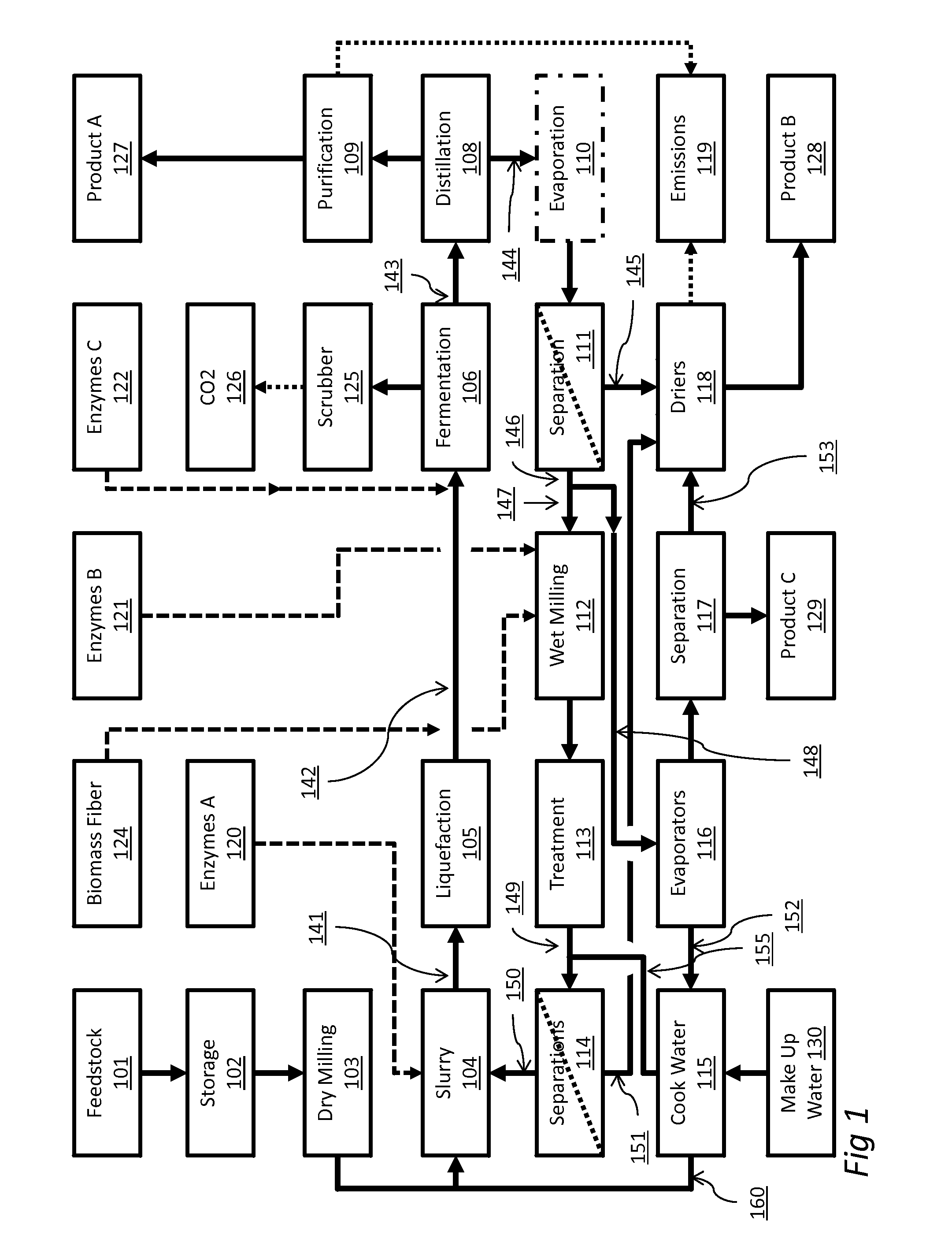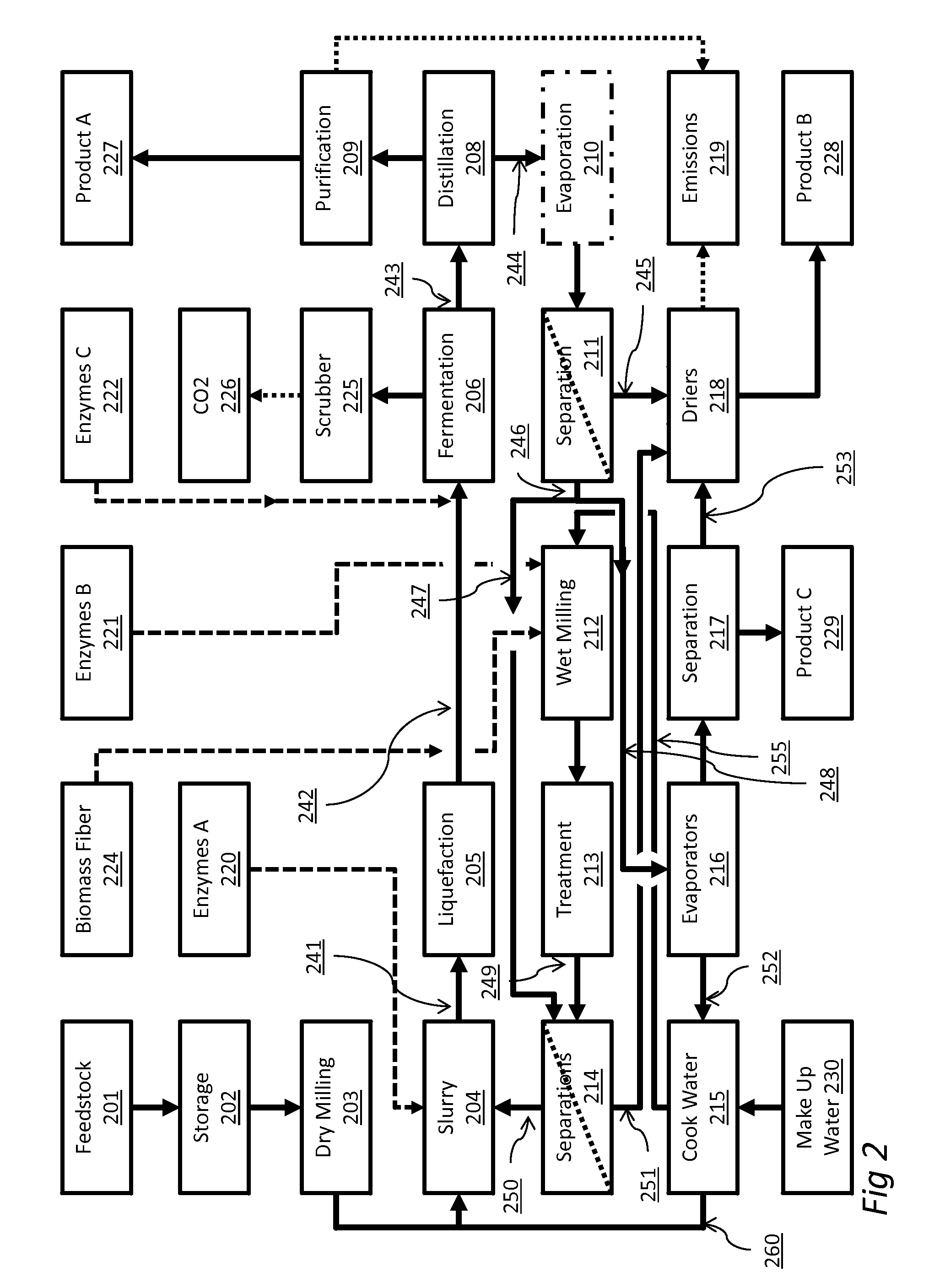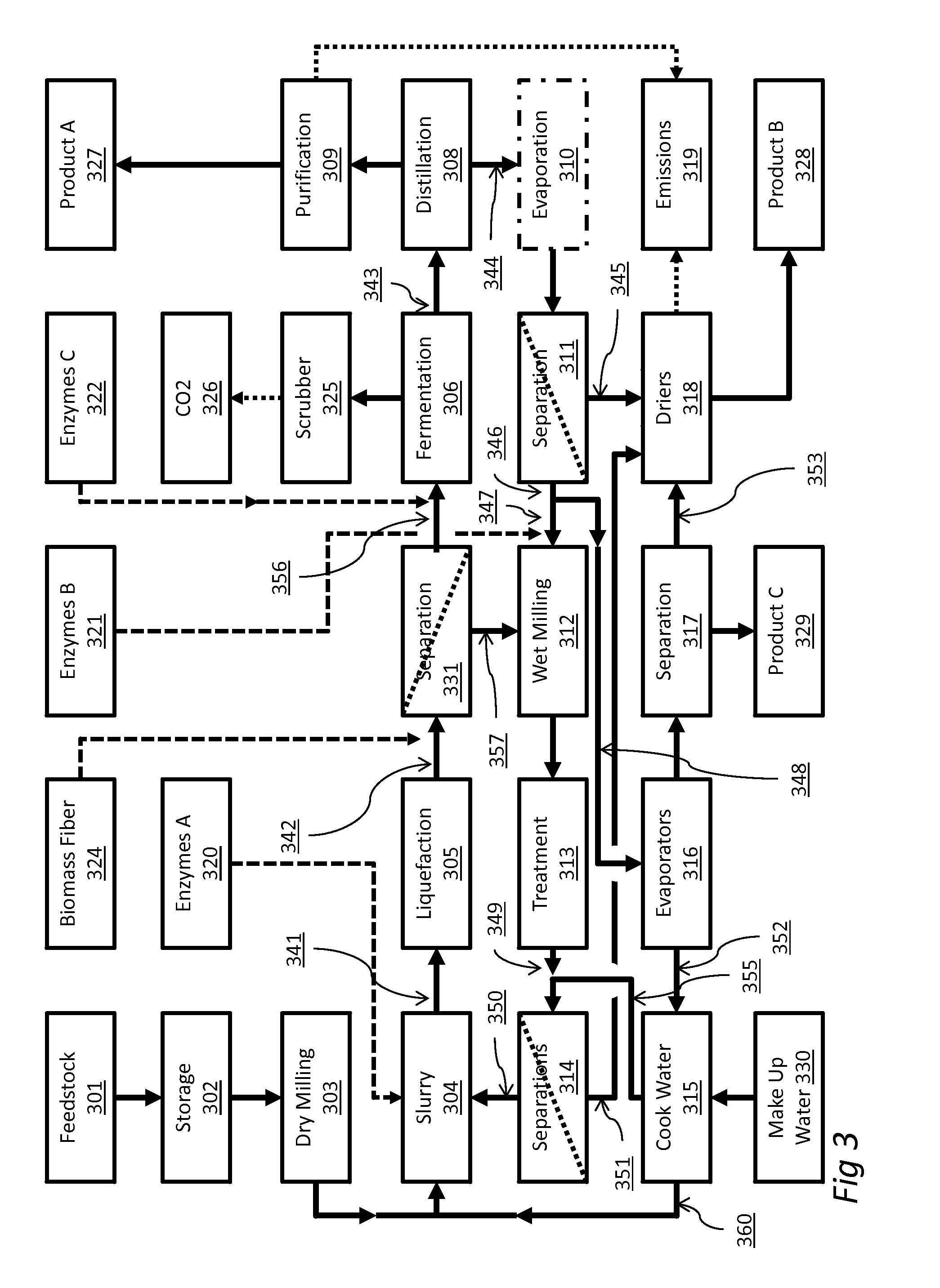Cellulose co-feed for dry mill corn ethanol operations
- Summary
- Abstract
- Description
- Claims
- Application Information
AI Technical Summary
Benefits of technology
Problems solved by technology
Method used
Image
Examples
example 1
[0127]This example illustrates that adding sugars derived from cellulosic biomass can be used to reduce the total amount of solids in fermentation while maintaining the sugars concentration.
[0128]One type of optimization is to reduce the total solids in fermentation while maintaining the same sugars concentration in the post liquefied mash and thereby, increase process efficiency by reducing osmotic pressure on the yeast organisms. In a baseline corn ethanol plant the solids and sugars target can be approximately 33% slurry total solids, 31% slurry corn solids (extracting 2% solids introduced with backset stream) and 24% post liquefaction sugars solids after hydrolysis (31%*70% starch / corn*1.11 sugar / starch). If the co-feed cellulosic sugars represent 3% post liquefaction sugars solids, then the corn solids could be reduced to 27% slurry corn solids ((100%-3% cell sugars / 24% target sugars)*31% slurry corn solids) or a 12% reduction in corn solids. With the separation step after sacc...
example 2
[0129]This example shows that biomass fibers can be used to filter the post-liquefied mash and recover sugars.
[0130]To evaluate the effectiveness of filtering the post liquefied mash with fiber to generate a clarified sugars stream and a solids stream, a filter test was conducted. A sample of 105.7 gm of post liquefied mash with 30% w / w corn solids with a 65% dry w / w starch composition (74.0 gm water, 31.7 gm corn solids) was filtered through 58.5 gm of wet cellulosic biomass with 10% w / w solid (5.85 gm fibers and 52.7 gm moisture), for a total system mass of 164.2 gm. A plug press filter was used and resulting in a three phase product consisting of 37.9 gm wet of corn solids plug, 13.8 gm wet fiber solids plug, and 112.5 gm of liquid (91.5% directly recovered). The solids of each phase was measured resulting in corn solids plug at 39.5% w / w solids, fiber plug at 48.3% w / w solids, and recovered liquid at 14.1% w / w solids and on balance 100.1% of the water and 99.8% of the solids wer...
example 3
[0131]This example illustrates the economic advantages of the co-feed methods as integrated into a conventional corn ethanol facility, which produces 110 MGPY of denatured ethanol at a yield of 2.75 gal of non-cellulosic ethanol per bushel of corn and needs 40M bushels of corn per year. The ethanol is sold at $2.25 / gal for $275.5 M per year revenue, while the corn costs $6 / bu for a cost of $240M per year. The co-products include 316 k tons of DDGS which is sold at $182 / ton for a $57.6 M per year revenue. Factoring the cost of natural gas and electricity, enzymes, and other cost of goods, the net EBITDA (earnings before interest, taxes, depreciation and amortization) is about $24.3M per year.
[0132]If the facility installs a conventional corn oil recovery system with a performance of 0.55 lb of oil / bushel of corn, the EBITDA increases to $31.1 M per year due to $8.8M / year in oil sales and the loss of $2.0M / year in DDGS sales and minor changes in energy and other related costs.
[0133]In...
PUM
| Property | Measurement | Unit |
|---|---|---|
| Concentration | aaaaa | aaaaa |
Abstract
Description
Claims
Application Information
 Login to View More
Login to View More - R&D
- Intellectual Property
- Life Sciences
- Materials
- Tech Scout
- Unparalleled Data Quality
- Higher Quality Content
- 60% Fewer Hallucinations
Browse by: Latest US Patents, China's latest patents, Technical Efficacy Thesaurus, Application Domain, Technology Topic, Popular Technical Reports.
© 2025 PatSnap. All rights reserved.Legal|Privacy policy|Modern Slavery Act Transparency Statement|Sitemap|About US| Contact US: help@patsnap.com



